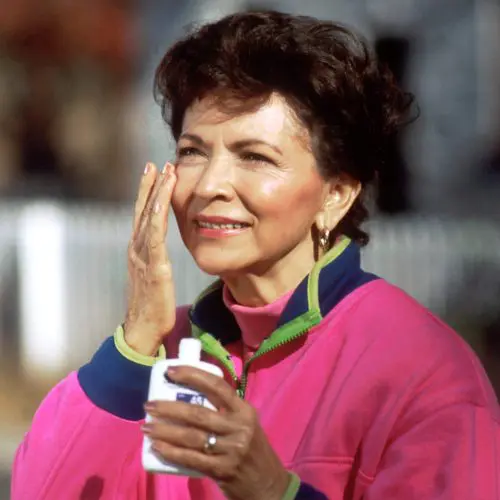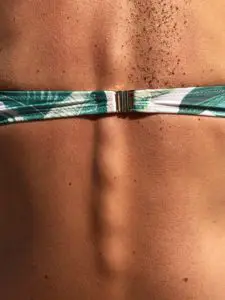
If you’ve never visited a dermatologist before, you might be wondering what will happen at an appointment. You’re probably wondering what questions you should ask. In any case, it doesn’t hurt to know what to expect and what to ask at your first dermatology appointment.

WHAT DOES A DERMATOLOGIST DO ON A FIRST VISIT?
During a first visit, dermatologists commonly conduct a full-body exam. Doing this baseline check of your skin is important so the doctor can look for any issues. You’ll need to dress down and wear a surgical gown.
Your dermatologist will inquire about your medical history, current medications, and any health concerns. You’ll be discussing a variety of health topics, even if they’re not related directly to your skin.
WHAT QUESTIONS SHOULD I ASK My Dermatologist?
Asking questions at the dermatologist may be hard to know where to begin. But don’t be afraid; the more questions you ask, the better. Dermatologists at the Tanner Clinic are happy to answer any concerns that you have relating to skincare. Here are a few questions you may want to consider asking:
- WHAT SUNSCREEN SHOULD I BE USING?
- WHAT CLEANSER/MOISTURIZER SHOULD I BE USING?
- DO ANY OF MY MOLES LOOK SUSPICIOUS?
- WHAT IS THE BEST WAY TO PREVENT AGING?
- WHAT SHOULD MY SKINCARE ROUTINE LOOK LIKE?
- ARE ANY MEDICATIONS OR SUPPLEMENTS AFFECTING MY SKIN?
If there’s anything unclear, don’t hesitate to ask the dermatologist for clarification. The better you understand what’s going on with your skin, the better treatment you’ll receive at our Layton dermatology clinic.
Next, let’s cover a few basic dermatology questions and procedures that you may find unfamiliar. These are common issues and procedures that dermatologists in Utah handle daily.
WHAT DO DERMATOLOGISTS DO?
- DO DERMATOLOGISTS PERFORM SURGERY?
Yes, many dermatologists do minor surgery, such as removing warts, moles, or skin biopsies. Some dermatologists specialize in more extensive surgery, such as removing skin cancer or benign cysts.
- DO DERMATOLOGISTS REMOVE SKIN TAGS?
Yes, dermatologists remove skin tags. Typically, dermatologists perform this quick procedure in the office.
- DO DERMATOLOGISTS REMOVE MOLES?
Yes, dermatologists remove moles. This quick procedure, like skin tag removal, can be done in the office.
DO DERMATOLOGISTS REMOVE CYSTS?
Yes, dermatologists can remove cysts during office visits.
- DO DERMATOLOGISTS POP PIMPLES?
Yes, dermatologists are trained in the proper techniques to pop a pimple. Not only do they know the correct technique, but they also take care of the pimples in a clean, sterile environment.
- DO DERMATOLOGISTS HELP WITH ACNE?
It’s recommended to consult with a dermatologist regarding acne issues due to their expertise and techniques. They can also write prescriptions for any medicine that will help to take care of the issue.
- DO DERMATOLOGISTS REMOVE WARTS?
Dermatologists remove warts using either a laser or freezing method. A quick office visit can take care of this issue.
WHAT ARE SOME COMMON DERMATOLOGY CONDITIONS:
- ACNE
Acne appears when hair follicles under the skin become clogged. It ranks as the most common skin disorder in the United States and can cause anxiety for those who suffer from it. Tanner Clinic has top-rated dermatologists in Utah that specialize in the treatment of acne.
- ECZEMA
Eczema manifests itself as dry, scaly, itchy skin. Like acne, it is a common skin issue for many people.
- SHINGLES
Shingles show up in the form of a red, blistering rash. Typically, this appears on the torso but can appear anywhere on the body. It can be accompanied by a headache and fever, too.
- HIVES
Hives are red, itchy welts that can occur on the skin. They commonly occur in response to environmental triggers, such as chemicals, sunlight, insect stings, or medications.
- SUNBURN
Excessive ultraviolet radiation from the sun causes a common skin condition known as a sunburn. A sunburn results in red, painful, and itchy skin.
- CONTACT DERMATITIS
Direct contact with a substance leads to contact dermatitis, which manifests as a red, itchy rash on the skin. Many different types of substances can cause this reaction, such as jewelry, soaps, cosmetics, fragrances, and plants.
- DIAPER RASH
Diaper rash ranks among the most common skin conditions in babies. It is an inflamed skin condition that appears as bright red skin on the baby’s bottom. It is usually caused by wet or infrequently changed diapers, chafing, or skin sensitivity.
- ROSACEA
Rosacea is a chronic inflammatory skin condition that usually appears on the face. Flushing, blushing, and visible blood vessels are common symptoms of rosacea. The cause of it is unknown, but it could be caused by an overactive immune system, environmental skin factors, or heredity.
WHAT ARE SOME COMMON DERMATOLOGY PROCEDURES/TREATMENTS?
SKIN BIOPSY
A biopsy is a sample of tissue taken from the body. This tissue is examined for any abnormalities. The dermatologist performs a biopsy by injecting a small amount of anesthesia in the designated area. The dermatologist will remove either part of the growth or the entire growth and send it to a lab for further testing.
SHAVE REMOVAL
The goal of shave removal is to cosmetically remove a noncancerous growth at a specific depth so that the wound heals flat. A surgical blade cuts a superficial slice out of the growth. The resulting scar will be minimal or invisible.
CRYOSURGERY
Cryosurgery is a procedure that uses liquid nitrogen or argon gas to destroy abnormal growths. A special canister typically sprays the nitrogen directly onto the growth, but it can also be applied with a cotton tip applicator. It’s fast with minimal pain and can be done in a dermatologist’s office.
TOPICAL CHEMOTHERAPY
In this treatment, a chemotherapeutic agent is applied directly to precancerous and cancerous growths. This treatment plan typically lasts a few weeks to several months. A dermatologist will actively monitor you during your treatment to ensure its effectiveness.
PHOTODYNAMIC THERAPY
Photodynamic therapy is the act of applying a chemical to cancerous or pre-cancerous growths. Afterward, a light source treats the area to activate the chemical to destroy the pre-cancerous or cancerous cells.
ELECTRODESICCATION AND CURETTAGE
During this procedure, a sharp surgical tool is used to scrape away any cancerous growths. This is usually done under anesthesia. Dermatologists then use an electrosurgical unit to stop the bleeding.
CONSERVATIVE EXCISION
In this procedure, the growth and a small amount of the area surrounding the growth are removed. The dermatologist stitches the area shut and sends the growth to a pathology lab for examination.
MOHS MICROGRAPHIC SURGERY
This is a precise surgical technique that is used to treat skin cancer. During the procedure, dermatologists remove thin layers of skin and examine them until only cancer-free skin remains.

DERMATOLOGY CLINIC IN UTAH BY THE TANNER CLINIC
If you are looking for a Layton dermatology clinic, the dermatologists at Tanner Clinic are here to help you. We can be reached at (801) 773-4840 or to make an appointment online, go here.

